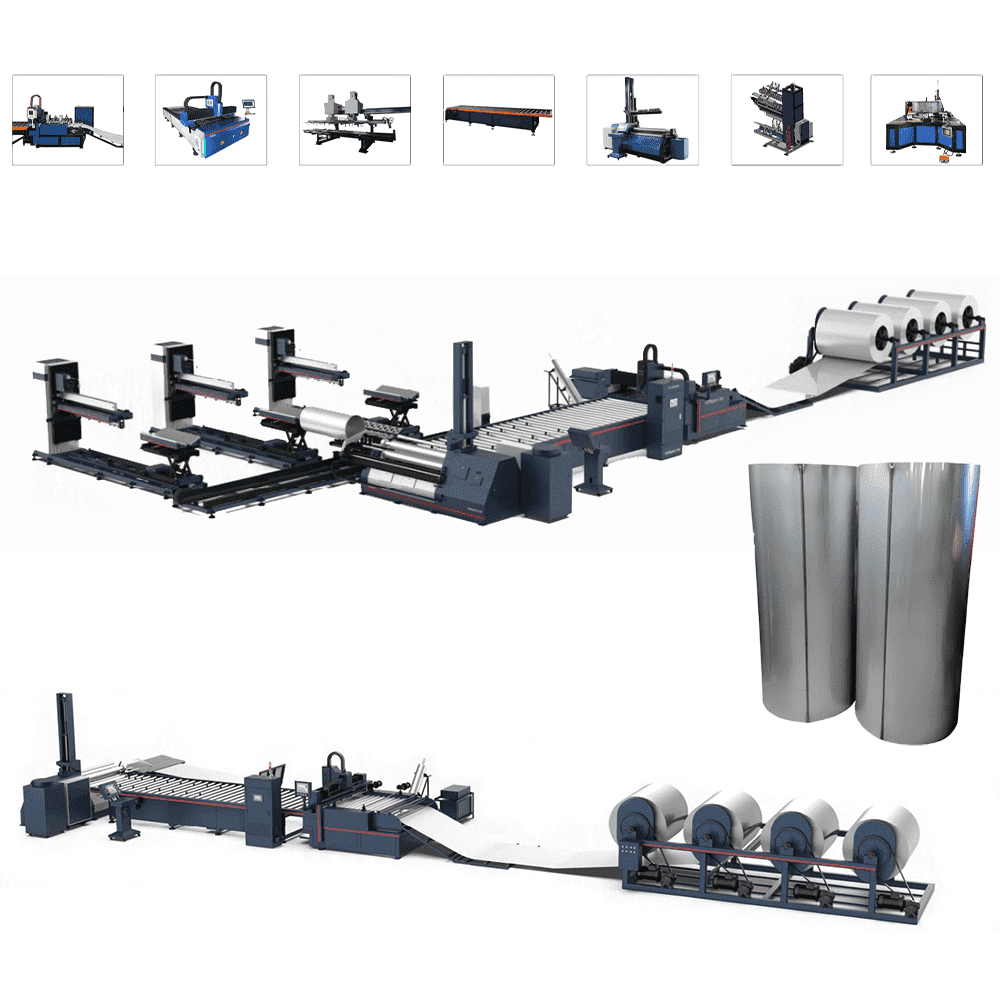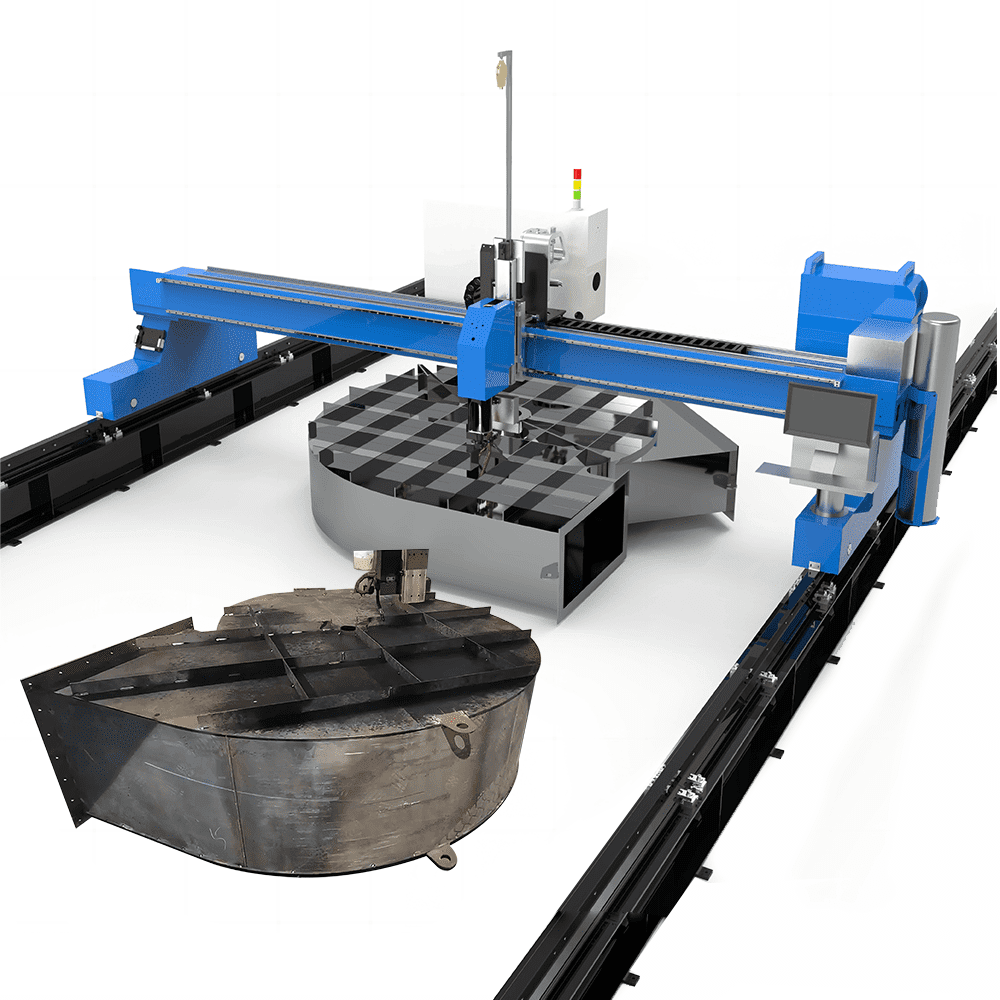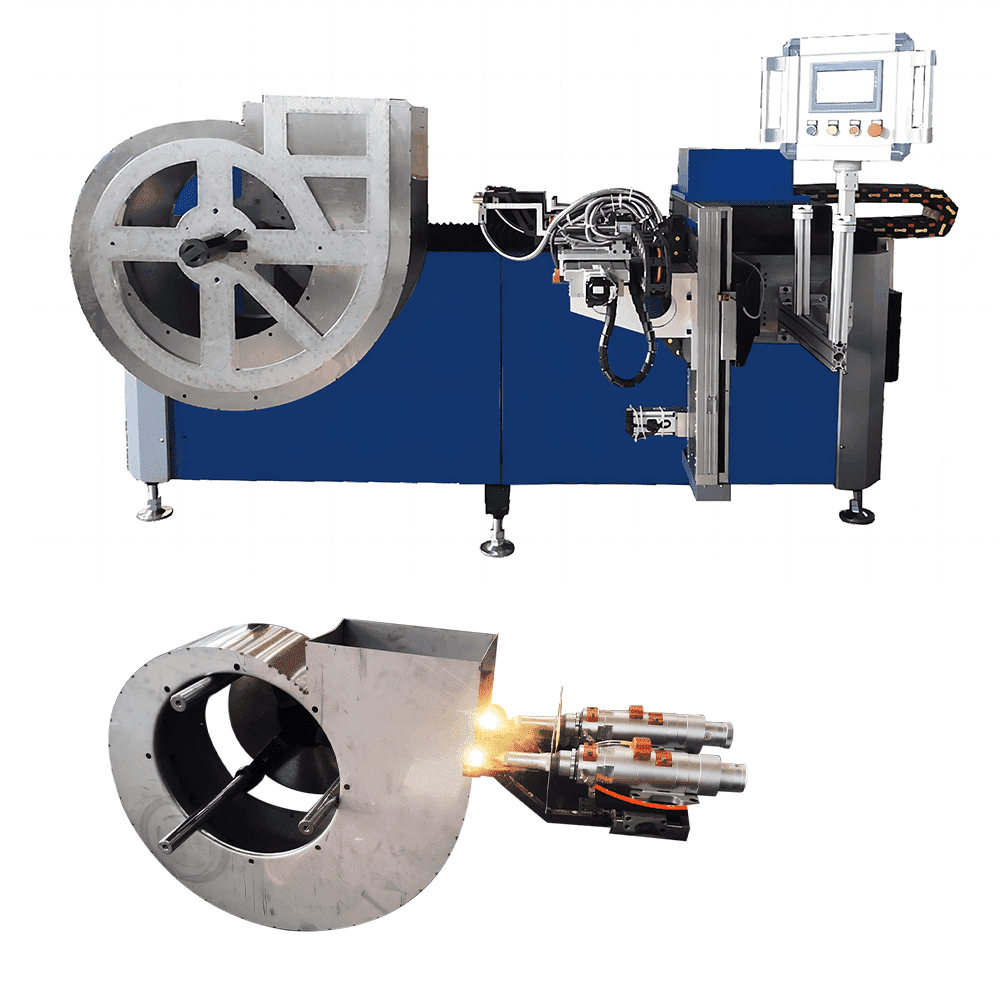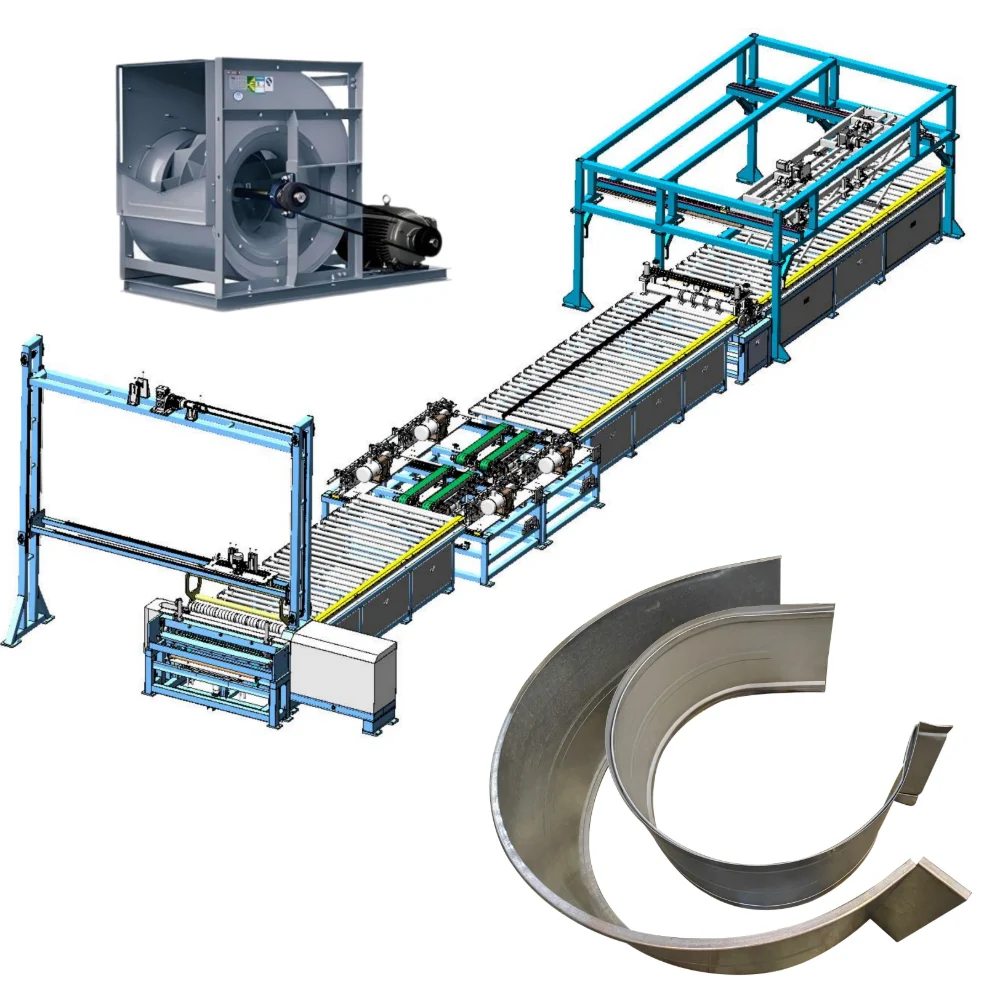Industry Fans Housing Welding: Techniques and Considerations
As a leading manufacturer of industry fans housing welding machines, ALTRON is at the forefront of these trends, continuously developing and integrating innovative solutions to meet the evolving needs of the industry. By staying abreast of emerging technologies and industry trends, ALTRON is committed to helping customers achieve their welding goals and maintain a competitive edge in the market.
I. Introduction
A. Brief Overview of the Importance of Welding in the Manufacturing of Industry Fans Housing
Welding plays a pivotal role in the fabrication process of industry fans housing. It ensures the structural integrity and longevity of the housing, which is crucial for the efficient operation of industrial fans. Without proper welding techniques, the housing may be prone to leaks, cracks, or other defects that can compromise its functionality. Therefore, understanding the welding process and selecting the right materials are essential steps in producing high-quality industry fans housing.
B. Introduction to the Scope of the Blog Post
This blog post aims to delve into the significance of welding in the manufacturing of industry fans housing. It will explore the definition and function of industry fans housing, emphasizing the importance of durability and precision in fabrication. Additionally, it will discuss the common materials used in industry fans housing and the properties and considerations for each material.
II. Understanding Industry Fans Housing
A. Definition and Function of Industry Fans Housing
Industry fans housing refers to the casing or enclosure that houses the fan components, such as the motor, blades, and bearings. Its primary function is to provide structural support and protection to these components while also directing the airflow in a specific direction. The design of the housing can significantly impact the efficiency and performance of the industrial fan.
B. Importance of Durability and Precision in Fabrication
Durability and precision are paramount in the fabrication of industry fans housing. The housing must withstand harsh operating conditions, including high temperatures, corrosive environments, and mechanical stress. Any imperfections in the welding process can compromise the structural integrity of the housing, leading to premature failure or performance issues. Therefore, precise welding techniques are essential to ensure the longevity and reliability of industry fans housing.
III. Materials Used in Industry Fans Housing
A. Common Materials Used
Several materials are commonly used in the fabrication of industry fans housing, each offering unique properties and advantages. Stainless steel is a popular choice due to its excellent corrosion resistance and strength, making it suitable for demanding industrial environments. Aluminum is another commonly used material known for its lightweight and good thermal conductivity, ideal for applications where weight reduction and heat dissipation are critical.
B. Properties and Considerations for Each Material
Stainless steel is renowned for its corrosion resistance, which is essential for industry fans operating in corrosive environments such as chemical plants or coastal areas. Its high strength also ensures the structural integrity of the housing under mechanical stress. However, stainless steel welding requires precise techniques to avoid distortion and maintain corrosion resistance.
Aluminum offers advantages in terms of weight reduction and thermal conductivity, making it suitable for applications where heat dissipation is crucial. Its lightweight nature also facilitates easier handling and installation of the housing. However, aluminum welding requires specialized equipment and techniques due to its lower melting point and higher thermal conductivity compared to steel.
IV. Welding Techniques for Industry Fans Housing
A. Overview of Welding Processes Suitable for Industry Fans Housing
Several welding processes are suitable for welding industry fans housing, including MIG (Metal Inert Gas), TIG (Tungsten Inert Gas), and spot welding. Each technique offers unique advantages and considerations based on the specific requirements of the application.
B. Detailed Explanation of Each Welding Technique
- MIG Welding: MIG welding, also known as Gas Metal Arc Welding (GMAW), utilizes a continuously fed wire electrode and a shielding gas to create the weld. It is known for its speed and versatility, making it suitable for welding a variety of materials and thicknesses.
- TIG Welding:TIG welding, or Gas Tungsten Arc Welding (GTAW), uses a non-consumable tungsten electrode to produce the weld. A separate filler metal may be added if necessary. TIG welding offers exceptional control over the welding process, resulting in high-quality, precise welds.
- Spot Welding: Spot welding involves the use of two copper electrodes to apply pressure and heat to the workpieces, creating a weld at specific points. It is commonly used for joining thin sheets of metal and offers fast cycle times and minimal distortion.
C. Advantages and Disadvantages of Each Technique in This Specific Application
- MIG Welding:Advantages include high welding speeds, good penetration, and suitability for thick materials. However, it may produce more spatter compared to other techniques, and the shielding gas can be sensitive to wind or drafts.
- TIG Welding: TIG welding offers superior control, producing clean and precise welds with minimal distortion. It is ideal for welding thin materials and intricate joints. However, it requires more skill and time compared to other techniques.
- Spot Welding:Advantages include fast cycle times and minimal heat-affected zones. It is well-suited for high-volume production and joining thin materials. However, it may not be suitable for thicker materials or complex joint geometries.
V. Pre-Welding Preparation
A. Surface Preparation and Cleaning
Before welding industry fans housing, thorough surface preparation is essential to ensure proper weld quality. This includes removing any surface contaminants such as oil, grease, or rust using solvent cleaning or mechanical methods like grinding or wire brushing.
B. Fixture Setup and Alignment
Proper fixture setup and alignment are crucial to maintaining dimensional accuracy and preventing distortion during welding. Fixtures should securely hold the workpieces in the desired position, ensuring precise alignment of the joint edges.
VI. Welding Process
A. Step-by-Step Guide to Welding Industry Fans Housing
- Fit-Up:Ensure proper fit-up of the joint edges, maintaining the desired gap and alignment.
- Welding Setup:Select the appropriate welding parameters based on the material thickness and welding technique.
- Welding Sequence:Begin welding from one end of the joint, moving systematically to ensure even heat distribution and minimize distortion.
- Filler Metal Addition:Add filler metal as necessary to fill the joint and achieve the desired weld profile.
- Cooling and Inspection:Allow the weld to cool naturally, then inspect for defects such as cracks or porosity.
B. Best Practices for Achieving Strong, Clean Welds
Maintain proper shielding gas flow and electrode angle to prevent contamination and ensure good weld penetration.
Control heat input to minimize distortion and avoid overheating the workpiece.
Monitor weld quality throughout the process, adjusting parameters as needed to maintain consistency.
Implement proper post-weld treatments such as stress relief to improve weldment integrity.
C. Troubleshooting Common Welding Issues
Common welding issues in industry fans housing fabrication include porosity, lack of fusion, and distortion. Addressing these issues may require adjustments to welding parameters, improvements in joint fit-up, or changes in welding technique. Regular inspection and quality control measures are essential to identify and rectify welding defects promptly.
VII. Quality Control and Inspection
A. Importance of Quality Control in Welding
Quality control is paramount in welding for industry fans housing to ensure the structural integrity, reliability, and safety of the final product. Consistent adherence to quality control measures throughout the welding process helps minimize defects, ensures compliance with specifications, and enhances overall product quality.
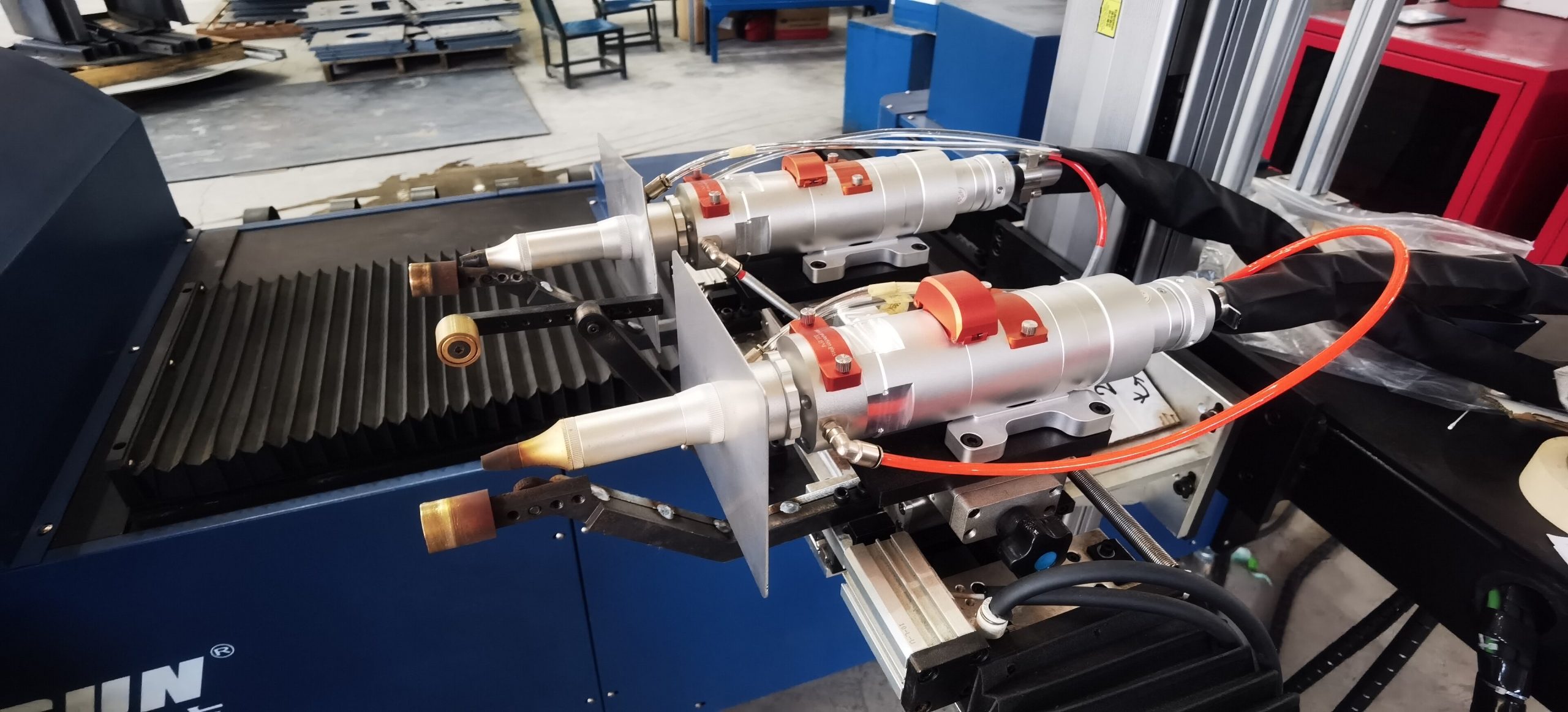
B. Inspection Methods for Ensuring Weld Integrity
Various inspection methods are employed to assess weld integrity, including visual inspection, non-destructive testing (NDT) techniques such as ultrasonic testing and radiographic testing, and destructive testing such as tensile testing and bend testing. These methods allow for the detection of defects such as porosity, cracks, and incomplete fusion, enabling prompt corrective actions to be taken.
C. Compliance with Industry Standards and Regulations
Compliance with industry standards and regulations, such as those set by organizations like the American Welding Society (AWS) and the International Organization for Standardization (ISO), is essential to ensure the quality and safety of industry fans housing. Adhering to these standards helps manufacturers meet customer expectations, minimize liability risks, and maintain industry credibility.
VIII. Post-Welding Treatment
- Heat Treatment Considerations
Heat treatment may be employed to relieve residual stresses, improve mechanical properties, and enhance the corrosion resistance of welded components in industry fans housing. Proper heat treatment procedures must be carefully selected and executed to achieve the desired results without compromising weld integrity or dimensional stability.
B. Surface Finishing Options
Surface finishing options such as grinding, polishing, and coating can enhance the aesthetic appearance, durability, and corrosion resistance of industry fans housing. These processes help remove surface imperfections, improve surface smoothness, and provide additional protection against environmental factors, contributing to the overall quality and longevity of the product.
IX. Case Studies and Examples
A. Real-World Examples of Successful Welding Projects for Industry Fans Housing
Case studies highlighting successful welding projects for industry fans housing demonstrate the application of advanced welding techniques, innovative materials, and quality control measures to achieve superior results. These examples showcase the capabilities of manufacturers like ALTRON in delivering high-quality welded products that meet or exceed customer expectations.
B. Lessons Learned and Best Practices from Case Studies
Analyzing case studies allows manufacturers to identify lessons learned and best practices for optimizing the welding process, improving efficiency, and enhancing product quality. Key takeaways may include the importance of proper weld preparation, selection of appropriate welding parameters, and implementation of rigorous quality control measures throughout the production cycle.
X. Future Trends and Innovations
A. Emerging Technologies in Welding for Industry Fans Housing
Advancements in welding technology, such as automation, robotics, and additive manufacturing, are revolutionizing the fabrication of industry fans housing. These technologies offer increased precision, efficiency, and flexibility in the welding process, enabling manufacturers to produce complex geometries with higher productivity and lower costs.
B. Predictions for the Future of Welding in This Sector
The future of welding in the industry fans housing sector is characterized by continued innovation, integration of digital technologies, and emphasis on sustainability and environmental responsibility. Manufacturers can expect to see further advancements in materials, processes, and equipment, driving improvements in product performance, reliability, and longevity.
Conclusion
In conclusion, welding plays a critical role in the manufacturing of industry fans housing, ensuring durability and precision in fabrication. By understanding the properties of different materials and employing appropriate welding techniques, manufacturers can produce high-quality housing that meets the demanding requirements of industrial applications.
As an industry leader in welding technology, ALTRON provides innovative solutions for industry fans housing fabrication, offering state-of-the-art welding machines and expertise to optimize the welding process and ensure superior quality and performance.

